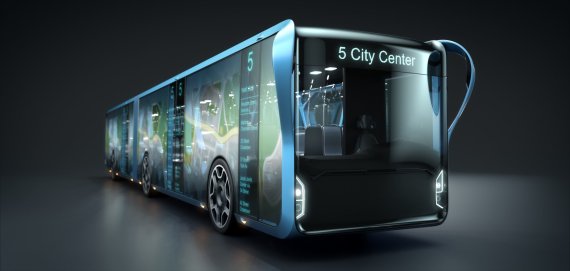Regardless of what the future brings – one thing will not change: People will continue to have the need to move from A to B. And to do so as quickly, as comfortably, as cheaply and as environmentally friendly as possible. Or, as renowned U.S. author George F. Will puts it, “The automobile has freed mankind from what has been called ‘the tyranny of distance.'” Modern mobility makes the world seem smaller than ever before. ISPO.com takes a journey into the future – and shows what urban mobility could look like in 2030.
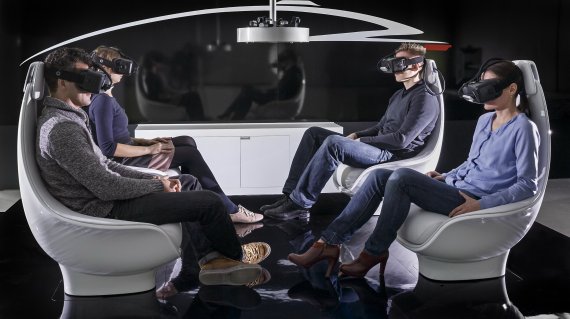
From bicycles to air taxis, from autonomous cars to cable cars – at the beginning of the next decade, we will have intelligent and networked means of transport at our disposal, some of which are still barely imaginable today. Perhaps Henry Ford, the inventor of car production on the assembly line, will be right when he predicted in 1940: “Mark my words. There will be a combination of airplane and car. You may laugh at it today. But such a thing will come.” If digital minister and air taxi fan Dorothee Bär hears that. And US computer scientist Alan Kay says pragmatically: “The best way to predict the future is to invent it.” We present six exciting and thrilling ways to be mobile in 2030.
By bike through Copenhagen
Tele-surgeon Nele Magnussen looks sleepily but contentedly at the latest information from her Apple personal assistant and iPhone successor iAm on her bathroom mirror on the morning of July 3, 2030: no rain in sight. She will ride the eleven kilometres to the hospital on her e-bike. But a good half of her route to work, the E3 Way, is covered anyway. Nele refueled her “H-Move” bicycle with hydrogen just yesterday. The power from the fuel cell is now enough for 150 kilometers again. When the 31-year-old reaches the first intersection, a green light on the display on her handlebars tells her that the motorist turning right has seen her. Since cars and bicycles have been networked, the number of fatal bicycle accidents in Copenhagen has dropped to almost zero. After four kilometers, Nele rides onto the “E3 Way” devised by BMW, which runs above the city streets. Her speed here is automatically limited to 25 km/h. The summer morning is already 24 degrees. But the doctor enjoys the fresh air, provided by rainwater cooling. A survey has shown: Users of the bicycle highway arrive at work in a 35 percent better mood than the Danish average.
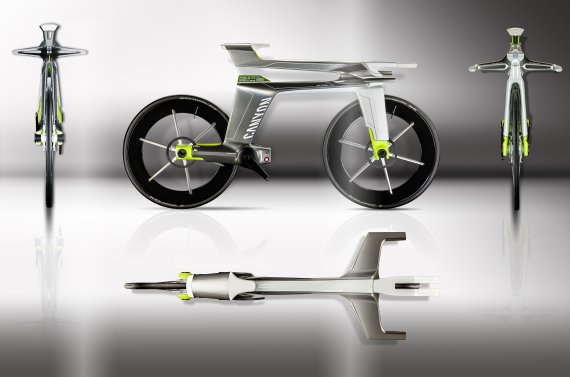
In the air taxi through Dubai
Patricia Depailler is a data steward at a battery manufacturer. In the emirate on the Gulf, only seven percent of the inhabitants now own a car. Every day, an app suggests which of the many mobility options is the best way to reach a destination – either particularly quickly or particularly cheaply. The Mobility Manager combines weather, traffic situation, current tariffs and the preferences of its user to create optimal solutions. The French woman’s Mobility Manager has selected the Volocopter – the small electric helicopter from Bruchsal in Baden-Württemberg. Patricia Depailler uses the taxi pod, a vehicle the size of a Smart car that her iAm ordered for her, to reach one of the Volo hubs, which is just under two kilometers from her apartment. Volocopters land here every minute. They are checked in, fitted with a new battery, and fly on. Seven minutes later, she lands at a Volo-Port, a kind of helipad, of which there are now hundreds in Dubai. From here, it’s just 200 meters to her company’s data center. And that, mon dieu, per flight at a price for which there is not even a taxi out of the city to Charles de Gaulle Airport in Paris.
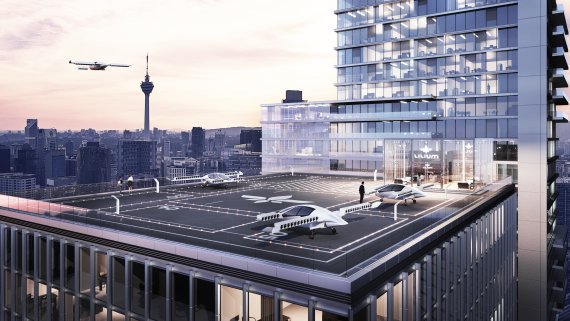
On foot through Oslo
Waste designer Magnus Peterson is in no hurry this morning. He designs high-quality products in his studio that are made from waste. As he usually does in the summer, the 42-year-old opts for the cheapest, healthiest and most environmentally friendly means of transport, which has been experiencing a tremendous boom for a good five years now. He walks. Compared to times long past, around the year 2021, people around the world have reclaimed the cities. According to statistics, the average life expectancy in Oslo has increased by 1.4 years since 2020. For Magnus Peterson, walking is pure pleasure – thanks to a completely new traffic system. There are hardly any fixed traffic lights anymore. Instead, smart intersections are used. When Magnus wants to cross to the other side, he steps on a contact on the sidewalk. An LED area then lights up on the street with stop signs for drivers and with a virtual crosswalk. Autonomous cars approaching will automatically stop. Older models at least display a warning in the cockpit. The system from the British company Umbrellium works tremendously flexible. If more people want to cross the road (or if it rains), the zebra crossing widens. Magnus Peterson also generates electricity for the public grid through his kinetic energy via “Energy Flooring”. At the same time, his “Walk Score” increases in Oslo’s pedestrian program. Those who achieve their walking goals receive tax breaks – and a voucher for a pair of new sneakers every year.
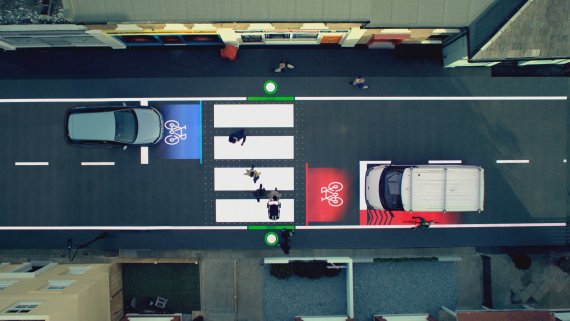
In an autonomous car to Hamburg
Carl Reutemann, Robot Consultant from Berlin, gets up early this morning. He advises customers on the selection of robots for the home or office. The Mobility App on his iAm advised him the night before to take the car for the 300 kilometers to Hamburg. The reason: the traffic situation is particularly favorable for the 6 a.m. departure. And in his Audi Aicon e3 Avant he can stow his luggage particularly well, the garden robot “Flowie”. That’s why Carl still has his own car – in contrast to 77 percent of Germans, who now do without one. Because it’s already light out, the 36-year-old doesn’t have to rely on his Audi’s drone, which flies above him in the dark and illuminates the way. When the Aicon e3 autonomously rolls out of the underground car park and registers Carl’s iAm, he stops and opens the doors. The robot expert sits down in the seat at the front left. Here there is no longer a steering wheel or pedals – but instead the mobile workstation with the largest display. PIA, the assistant to his Audi, adjusts the seat position, air conditioning and lighting to Carl’s preferences. Which she knows, too, because she has an empathy chip built in: Carl Reutemann is extremely taciturn before nine in the morning. That’s why she limits herself to the most necessary communication. When, still in Berlin, a pedestrian almost jumps in front of the car, the Aicon’s LED panels project a warning sign onto the road. All goes well – as it almost always does. Since older cars can be retrofitted with autonomous control, the number of traffic accidents in Germany has dropped by 90 percent. That’s why Carl no longer has to wear a seat belt. He can relax and answer emails on the tablet in front of him.
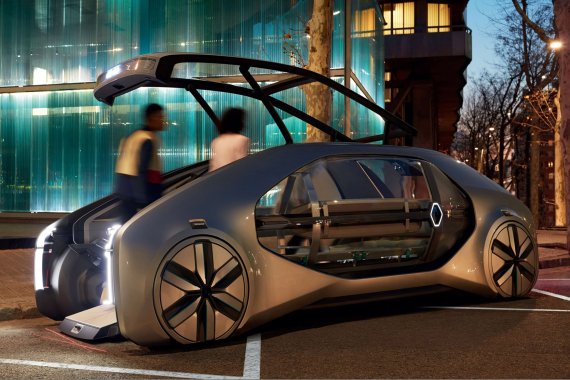
In the cable car through Chicago
Walker-talker Simon Wallis Hunt has one of the nicest jobs in the US – Navy Pier on Lake Michigan, the city’s biggest tourist attraction with parks, gardens, shops, restaurants and a Ferris wheel. Here he spends the day with his clients – elderly and well-off gentlemen who pay him to walk (“walker”) and talk (“talker”) with them. To them, the company of the 26-year-old, who is as perceptive as he is amusing, is worth quite a bit of money. For the past four years, Simon has been reaching Navy Pier by cable car. In 2026, the “Chicago Skyline” opened – a spectacular 2.5-kilometer cable car route between skyscrapers that connects downtown with Lake Michigan. Up to 3,000 people per hour travel in the glass gondolas, 17 stories above the ground. At 14 mph, the pace at which Simon reaches his workplace is leisurely – but still much faster than any traffic jam. The trams in the sky can be built unbeatably fast and cheaply, and are considered the safest means of transport in the world. A comparable subway can handle 20,000 passengers per hour – but costs at least ten times as much.
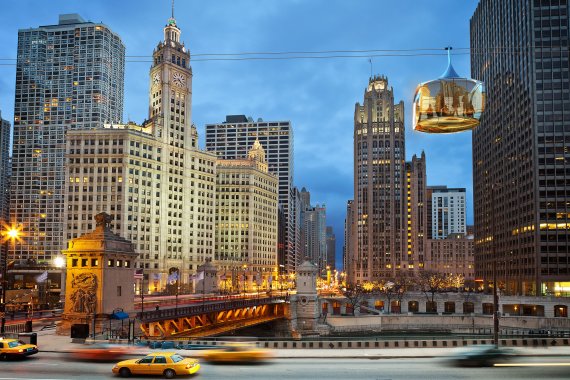
In a modular taxi through London
Cyber City Analyst Sophie Clark is an expert on smart cities. At City Hall, she and her colleagues make sure that all the data that keeps the metropolis alive flows smoothly. The 27-year-old knows every way to travel the 13 miles from her apartment in Wembley to City Hall. When her iAm wakes her at 5.45am, it suggests the best solution depending on the weather and traffic – the e-bike, the good old Tube or one of the new taxi systems. Because the roads are relatively clear on July 3, 2030, Sophie’s iAm recommends an autonomous taxi, the Rinspeed taxE from Switzerland or a Next Swarm taxi from Italy. Sophie loves the tiny four-to-six-passenger taxE electric buses, which communicate with other road users through giant displays at the front and rear: “Watch out, kids,” or “I’m giving you the right of way.” The taxi she opts for today seems almost like science fiction: The Next consists of modular cabs for ten people each, which automatically couple together as needed. At peak times, six or more modules make up an entire taxi train. What Sophie Clark likes about the Next is that in the morning there is a bistro module where she can buy sandwiches or sushi for the office.
